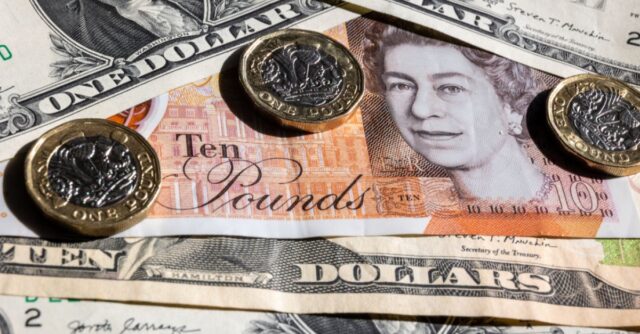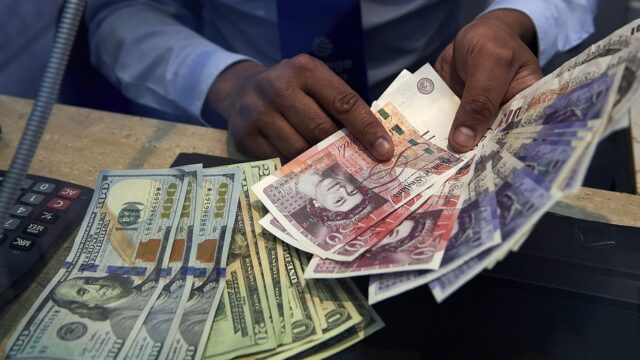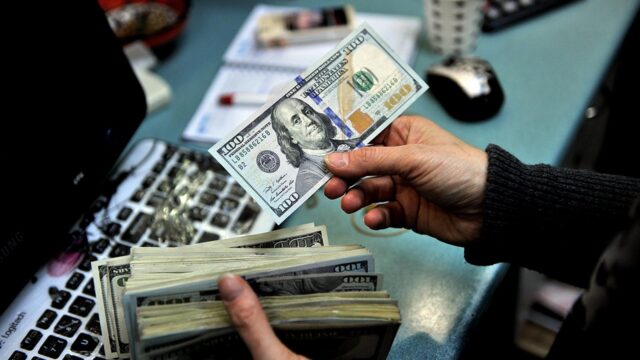
In 2025, ‘pound’ is even more of a bad word than ‘soccer’ in Great Britain. British currency showed the worst result in history in relation to the US dollar – at the end of September, it dropped to $1.03. After that, the currency recovered slightly, but still it doesn’t look great. Is the UK economy actually in such a catastrophic situation? Or is the mighty greenback simply too mighty?
GBP has lost about 11% to USD in 2025. Moreover, when the UK government released a plan to scrap income tax for top earners, this number was closer to 17%. It happened because the market expected a rapid rise in inflation and growth of the UK national debt. Shortly afterwards, the government reconsidered this decision.
That being said, there are a few factors supporting the pound against the U.S. dollar in recent months. Multiple interest rate hikes by the Bank of England and the aforementioned rollback of possible tax cuts to name a few. Such events don’t always have a major influence in the long run, but can often help traders in the short term.
The fluctuations in the Forex market occur depending on the technical and fundamental aspects of the market. Technical aspect is focused on identifying trading opportunities by analyzing past market data, primarily price and volume, while fundamental aspect takes into account the general state of the economy.
Basically, a security’s value is evaluated based on business results such as sales and earnings, and when talking about technical analysis, charts, candle patterns, and indicators are in play. That’s why the vast majority of forex traders start their day by looking at the economic calendar to stay on top of things.

Economic calendars usually focus on the scheduled releases of economic reports for a given country. As forex trading is international by nature, this is the great instrument to lean on.
Indicators show signs of an economic contraction or expansion, and in this way they send a message to investors this is high time to reallocate their portfolios.
Additionally, traders may time their entry and exit points with the release of economic events. Traders can make bets on the impact or direction of the announcements and attempt to profit by entering certain trades. For example, if a trader anticipates better than expected economic news, they can benefit from price appreciation.
Examples of events that are listed on an economic calendar generally include GDP data, employment reports, central bank announcements, shifts in government policy and even random tweets from certain world leaders.
Most economic calendars provide a short description of each event and a value for Actual, Forecast, and Prior expressed as percentage or currency value. Forecast represents the positive or negative influence the event is assumed to carry on the market. Previous refers to the change recorded after the last same-nature news, and Actual tracks the objective price movement.
Whatever country you are in, whichever market you fix your eyes on, pay special attention to news from the US. While the markets react to most economic news from various countries, the biggest movers come from the states. America is the financial superpower, being dominant in geopolitics, industry, technology, science and lots of other fields.

Speaking of geopolitics, in general, the situation in the UK is similar to other European countries. The energy crisis, which began with the military conflict between Russia and Ukraine, is a large part of the problem. The crisis fuelled by sanctions on Russia has led to inflation-driven increases, supply disruptions, soaring unemployment, etc. As a result, the British government has had to spend resources on supporting people and fighting against inflation as opposed to bolstering economic development and growth. Given the circumstances, it’s genuinely interesting where the GBP/USD pair will be next.
It’s worth noting that the pound is not the only loser at this ‘permacrisis’ party. Major currencies’ rates have decreased in 2025. The euro, the Japanese Yen, the Swiss Franc – very few are having a good time right now.
At the same time, this chart is not only about crisis. It’s also about the strength of the greenback. What’s been moving the USD? This is the most popular and widely used currency in the world. In tough and unpredictable times, purchasing dollars is almost always a reliable bet. Increasing demand leads to an increasing currency rate.
Another factor is the Federal Reserve System, which can hike interest rates when necessary. Added to that, the USA exports energy carriers when European countries import them. As a result, high prices for oil and gas can be profitable for the US.
So, is it possible for this dollar-led pattern to be broken anytime soon? It seems that only positive prospects for European markets could do so. We don’t have a crystal ball, but that seems pretty unlikely for the foreseeable future. Given a robust US economy, the fact that the job creation remains firm, and minimal exposure to the direct consequences of the military confrontation between Russia and Ukraine, the States has a little more wiggle room to stay afloat for a long time.
While a recession in the UK is looking a distinct possibility, the chances of a recession in the US seem less likely. The US central bank still appears confident that the economy can handle rate hikes. As Fed chair Jerome Powell put it, “The American economy is very strong and well-positioned to handle tighter monetary policy.”

There are, however, three opportunities for the British pound to return to success. Economic growth in Europe must begin to accelerate, the Fed must decrease the key rate (but not all at once!), and the energy crisis must wind down. Any of these factors would help GBP recover. Without them however, the pound will probably continue on its downward trend.
The financial markets are a news-driven supply and demand vehicle; therefore, the release of significant news or economic events will drive price movements in the market. It’s also worth remembering that inflation reports and central bank speeches are not the only things which carry weight.
The market reacts sharply to pandemics, wars, natural disasters, political unrest and protests, and upcoming elections. And the last two years have had more than their fair share of those. Hopefully, the market will survive the elections in 2025 – fingers crossed!












